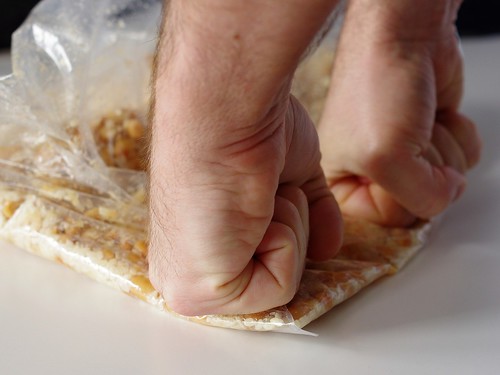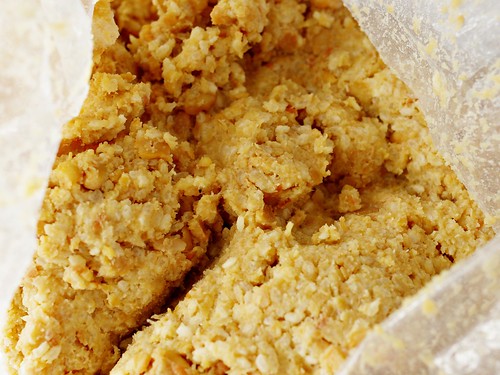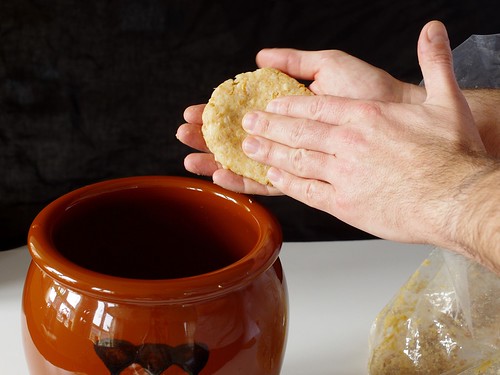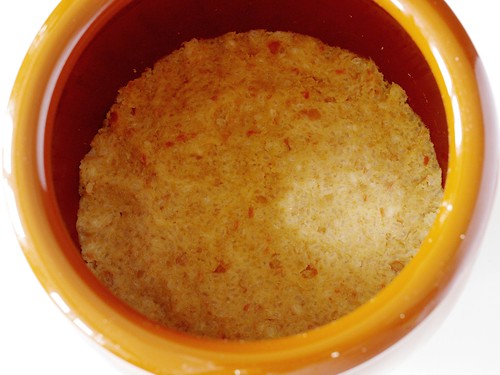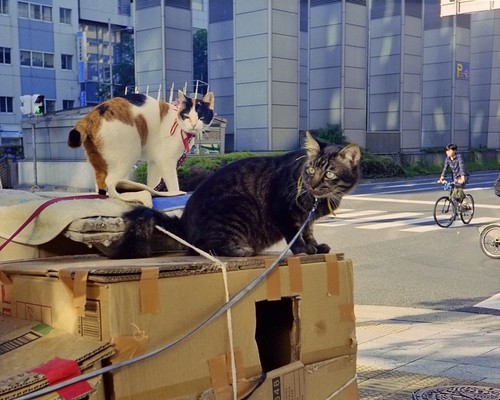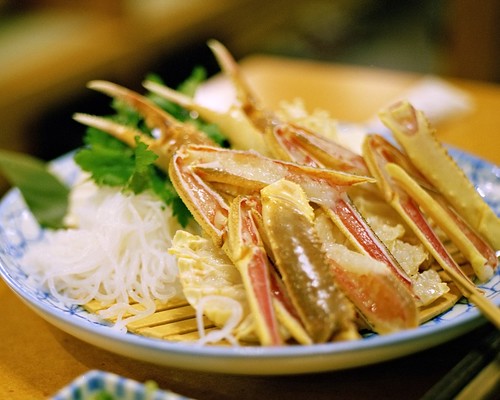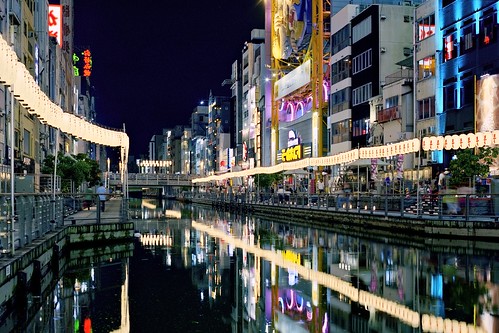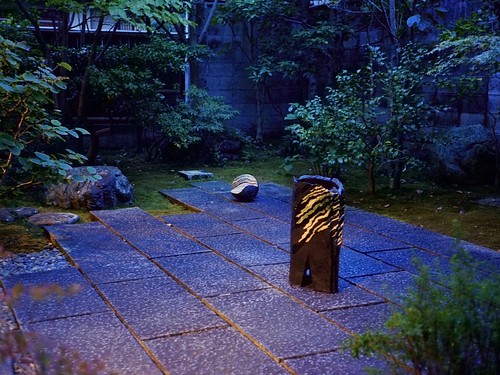Miso is a staple of Japanese cooking. Nowadays you buy it ready-made in supermarkets or miso-shops, but up until fairly recently it was not uncommon for people to make their own. It's really quite simple: cooked soy beans, rice or barley is mixed and fermented with "koji" until it turns into a brown, intensely flavourful paste.
I stumbled on a miso-making kit recently, so we're having a go at it. You could easily get the ingredients for yourself of course, but it's very convenient to get the right amount of everything and a set of instructions.
Boiled soy beans; rice mixed with koji; salt; and a bit of miso dissolved in warm water. A strong plastic bag is good for mixing stuff, but a bowl would be fine too of course. Had we used dry beans we'd have first soaked them for a day, washed them, then boiled them for a few hours until soft.
Mix everything. First add all dry ingredients and shake it around until it's more or less mixed. Then pour in the starter miso. The miso is not really necessary, I think — some recipes use only water or nothing at all.
Crush the beans and rice. How much you mash it will determine the texture of the final miso paste. This is where a plastic bag is really convenient; with a bowl you'd end up with mashed bean paste all over your hands. For large amounts you can use a meat grinder.
Our finished paste. The texture should be fairly soft; "like squeezing your earlobe" is a common comparison. This is on the rough side, and should give us a nice texture. If it's too dry, add a bit more liquid.
Knead the paste into dense patties or balls, then push them into the bottom of the container. The idea is to get rid of any air pockets.
Cover the surface with kitchen wrap to avoid air contact, then add a heavy weight. Put the container away in a dark, cool place. Done!
Now we wait. The main risk is getting mold on the surface (that's what the kitchen wrap and the weight is all about). Check every month or so, and if green or black mold appears just scoop it up, then sprinkle salt over that bit to stop it from reappearing. Some recipes call for a layer of salt on top, but that makes the miso rather salty.
In May, when temperatures rise, the process will start to speed up, and by October or November the color should begin to change. Once it's done, put it in airtight containers and keep it in the fridge. That's cold enough to stop the process, and the miso should keep for many months. We'll see if we succeed.



